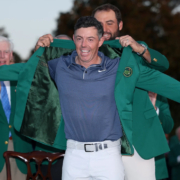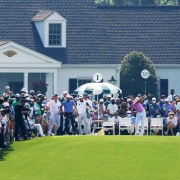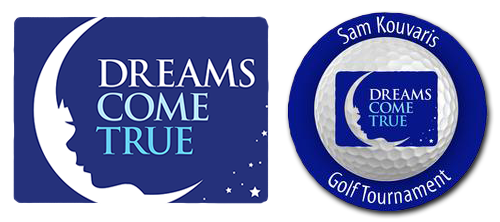An Investment in Rory
Watching the NCAA National Championship game in 2002, my alma mater, The University of Maryland, was locked in a tight battle in the second half. I was at my friend Peter’s house when I walked outside to grab a drink off the porch. Watching through the window, the Terps took a two-point lead as I opened the bottle. As any sports fan knows, I was now stuck, and watched the rest of the game through the window as Maryland won the title. Silly, I know, but it’s the kind of thing sports fans do. If I had walked inside and the Terps lost, I’d have never forgiven myself.
At this year’s Masters, it seemed everybody had that same feeling about Rory McElroy. Why was everybody so invested in Rory? He hadn’t won a Major in over a decade, he had several chances that didn’t come to pass, mostly of his own doing. He had several personal picadillo’s in the last ten years that made you scrunch up your face and say, “What?”
His loyalty to the PGA Tour in the LIV Split has been lauded, but he’s also been divisive, which seemed unnecessary. He left the grounds after getting beat at the US Open last year (and beating himself), he announced, for a short time, he was getting divorced, grabbed a phone from a fan he didn’t like taking his picture and has been petulant on more than one occasion.
And still, we were all invested in Rory like never before.
Was it history? Certainly, his quest for golf’s career Grand Slam is a massive story. But were we that invested in Greg Norman in the ‘90’s when he was the most dominant player but couldn’t finish?
“Greg’s a jerk,” Don, a golfer and a fan told me in the 19th hole last week. “Nobody cared if Norman won or lost. In fact, a lot of people were happy he was getting beat.”
Clearly that’s not the case with Rory. He’s a likeable guy who we’ve seen grow up in front of our eyes. He’s been available to us, and he’s revealed himself to us over the years unlike many modern-day sports stars. We know when he’s happy and we know when he’s not, because he tells us. An unusual trait among most privacy-seeking athletic superstars. He’s human and reveals that almost weekly.
There’s also the matter of his particular greatness on the golf course. His swing is envied by all. Prodigiously long and constantly trying to get better, McElroy seems to always be there. When he’s on, there’s nobody better. And when he’s off, he’s usually still in it and providing theater with every shot.
“Almost Arnold Palmer-like,” my friend Rob theorized during our post-Masters debrief. “You’d be rooting for Arnold, and he’d triple sixteen or three-putt the last hole and you’d be exasperated. Rory’s the same way.”
Did the golfing public live and die with Arnold every time he played in the PGA trying to complete the Grand Slam? Actually yes. Did golfers tune in with anticipation when Tom Watson was trying to complete the Grand Slam as he played the PGA? Not really. Watson was detached and somewhat aloof, never as available as McElroy. And nobody has ever been as gracious in defeat in any sport as Palmer and Jack Nicklaus. Jack’s arm around Watson at Turnberry at “The Duel in the Sun” is legendary. Any comparisons to them would fall short.
But golf coverage, and information in general was much harder to come by. In this information age, everything is almost cartoon like, blown way up and often out of proportion, good or bad, then shoved into the past. So, in the moment, Rory’s victories and defeats seem outsized, for just a moment. And in more detail, because we see everything in some media, the collective investment with Rory among sports fans rose and fell with every shot.
“I wish he had just said he hit it off the toe and it was an awful shot,” my brother Gust said with a laugh talking about McElroy’s in explicable water-bound third shot at thirteen in the final round. “That whole thing about it being on a slope and he usually pulls it left, nobody bought that. It was just a terrible shot, and he should have just said that.”
Between the heightened coverage, the historical quest and McElroy’s standing among this century’s sports stars, the focus was on him as he crept up the leaderboard Friday and Saturday. But perhaps an overlooked part of the intense interest was that fact that it was at The Masters.
For all the talk of the Open Championship crowning the “Champion Golfer of the Year,” The Masters is the most important tournament on the calendar. The intense scrutiny of the tournament and Augusta National Golf Club and the golf course is unprecedented worldwide. The Open Championship is beloved as a sporting competition by golfers everywhere, but The Masters is revered by golfers and casual sports fans alike. The “Green Jacket” as a trophy is recognized by other sports champions as the ultimate symbol of achievement and excellence.
Now that Rory has achieved the ultimate goal in his sport, does he sit back in satisfaction? Does his game fall off a bit? Or is he freed up to not play even better and continue winning? I think the latter is true, but one thing that won’t change is sports fans investment in Rory. He’ll still be the favorite, even among the “Yeah, but” crowd. Too relatable, too real and too much like us for that to change.
I liked what golf writer Kyle Porter said of Rory’s emotions after winning at Augusta: “What it must be like when your dream and your nightmare happen to overlap, and you fulfill one while conquering the other at the exact same time.”
Perhaps that’s why we have such an investment in McElroy. A dream, and a nightmare, that can happen all at the same time.



